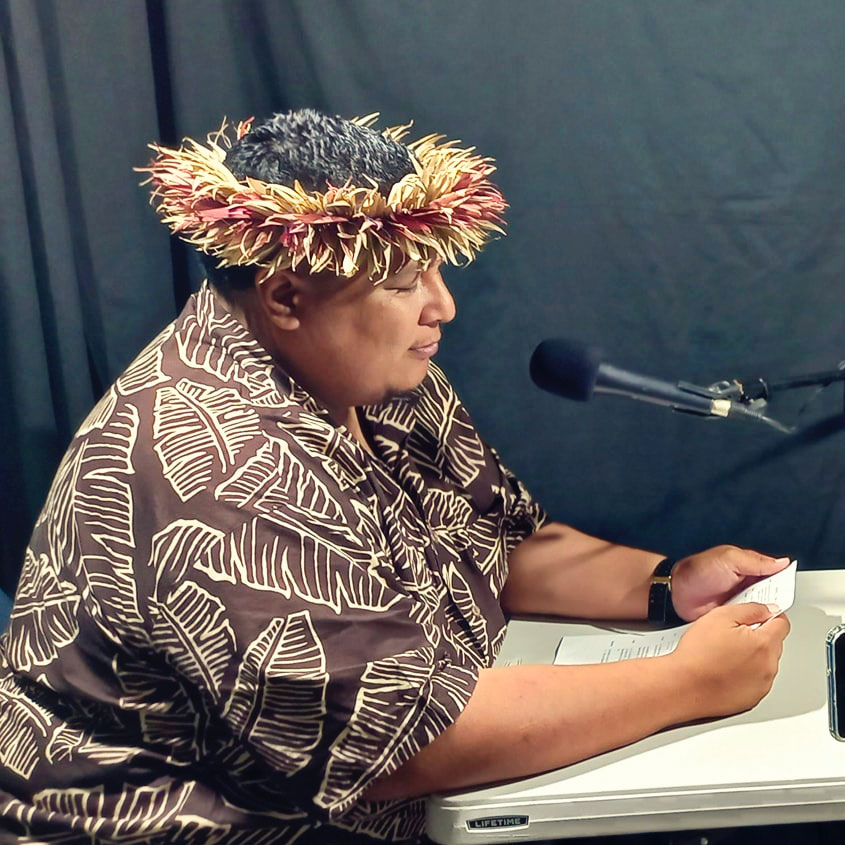Masterclasses
Knowledge sharing
Storytime and Play sees Pacific media industry leaders come together with media professionals for knowledge sharing, two-way mentoring and professional development in children’s media.
One-on-one weekly mentoring was provided in addition to online masterclasses.
The masterclass videos are shared here for future learning.


Watch Now
CHILDREN’S ONLINE LEARNING
Selena Bartlett
Neuroscientist & Academic
INTRO TO IMPACT
Felicity Blake
Producer
Watch Now
Watch Now
INDUSTRY INSIGHTS
Bernadette O’Mahony
& Whetu Fala
Industry meet & greet
Bernadette O’Mahony – Head of Content at Australian Children’s Television Foundation
Whetu Fala – NZ Filmmaker, Board member for Māori TV, NZ Film & Heritage Trust, Ngā Taonga Sound & Vision, and Creative NZ
Bernadette and Whetu discuss market options for Pacific content, networking and tips and tricks for pitching your project. They suggest festivals for children’s content and the importance of archiving.
Tech Specs
Mike Gissing
Picture and Sound Post-Production
Mike presents detailed information on delivery specs both generally and for Pasifika TV. He explains file wrappers (e.g. .mov and .mxf) and provides tips including free software and plugins to help make the broadcast masters title safe and technically acceptable. Mike is highly experienced in post-production processing for sound and vision, having delivered program masters to international broadcasters and distributors over many years. He is a member of the Australian Cinematographers Society and started making super8 films at age 13.
Watch Now
Watch Now
Writing
Emma Palmer
Actor and Writer
Sound Recording
Andrew Belletty
Sound Designer
Watch Now
Watch Now
Design
Jonathon Oxlade
Production Designer
Jonathon discusses Production Design for Child Audiences and shares examples from Beep and Mort Kids TV Series. This session discuss visual storytelling techniques and tips, tricks, frameworks for design for set, props, costume, puppetry.
Directing for Kids’ TV
Beck Cole
Director
Watch Now
Watch Now
Camera & Lighting
Murray Lui ACS
Cinematographer
Producing
Rita Cattoni
Producer
Watch Now
Watch Now
Inclusion
Robyn Hunt ONZM
Disability Representation
Dr Dimitri Christakis
Pediatrician & Researcher
Watch Now
Watch Now
Writing
Clare Madsen
Writer
Neuroscience
Jen Knoll
Expressive Arts Therapist
Jen from the Australian Children’s Foundation discusses how the brain develops in children. She advocates building awareness and understanding of children’s sensory engagement with media; what works, what doesn’t, what is age-appropriate and importantly why – a delve into children’s play and creativity and how this will help you create effective children’s media.
Watch Now
Watch Now
Writing
Dot West, OAM
Writer
Stories
Jay Laga’aia
Actor
Jay shares personal stories reflecting on the Pacific culture of fatherhood and draws on his experience producing his own children’s series. He relates his method of recording storytime with his children that enabled him to build stories and write books based on them later. Jay gives ways and reasons why he engages fathers, stating that children need permission to play from adults.
Watch Now
Watch Now
Audiences
April Phillips and Paul Gartside
Australian Children’s Television Foundation
Radio
Clémence Petit-Perrot
Children’s Radio Foundation, Africa
The Children’s Radio Foundation trains youth across Africa as radio reporters, giving them the tools and skills to make their voices heard. Clemence shares inspirational case studies that created social change. One project saw young reporters become researchers for UNICEF to advocate for mental health services for adolescents around the world. Another project embed the adoption of intergenerational learning when parents recognised the importance of early childhood development.
Watch Now
Watch Now
Creative Process
Jackie Kauli, Verena Thomas, Brad Haseman
Community Art Practitioners and Academics
This presentation explores co-creative processes used in social justice projects in Papua New Guinea. Presenters share techniques in process drama and co-creative media to discuss the curation of local contexts and indigenous knowledge for education and intergenerational dialogues. Presenters illustrated how stories are co-developed, how they connect with communities, especially through dialogue, and how they are then shared for maximum impact.
Art for Kids
Sue Giles
Theatre maker
Sue discusses children as contributors, as powerful agents in their own stories and as cultural citizens with the right to art and cultural expression at all ages. This masterclass shares stories and examples of works created for and with children and the processes behind them. Sue also shares practical exercises to free up the approaches to child-centred practice.
Watch Now
